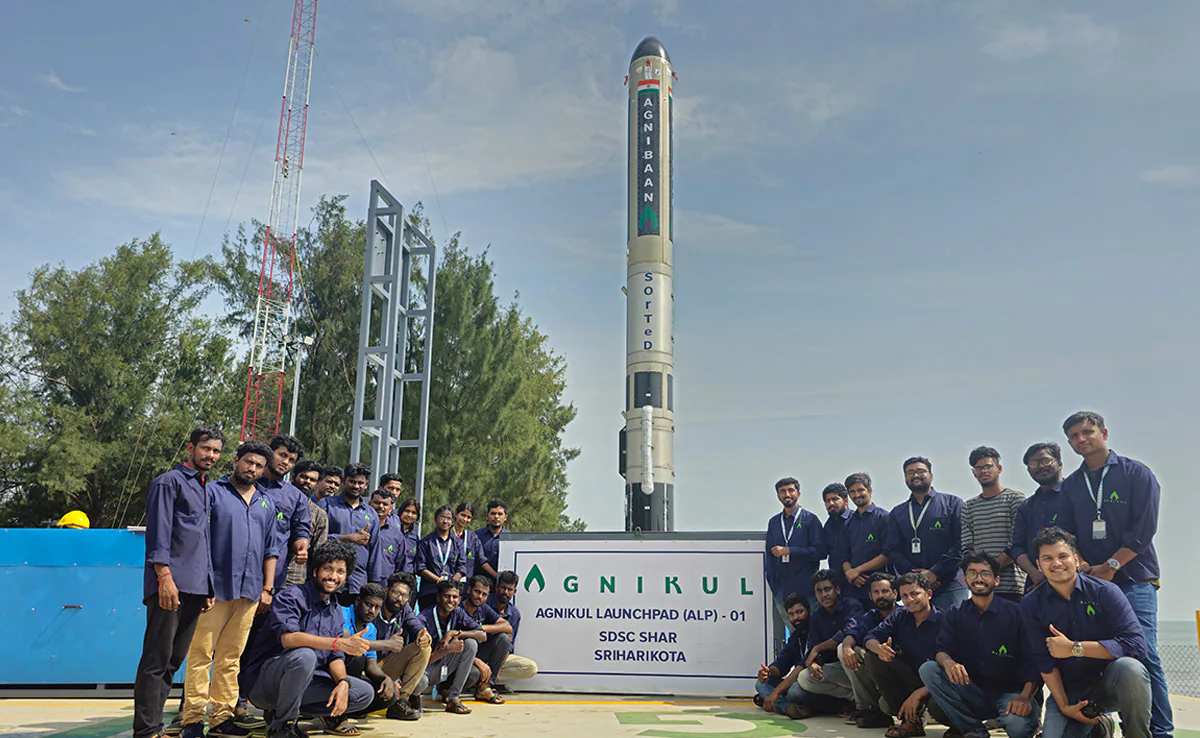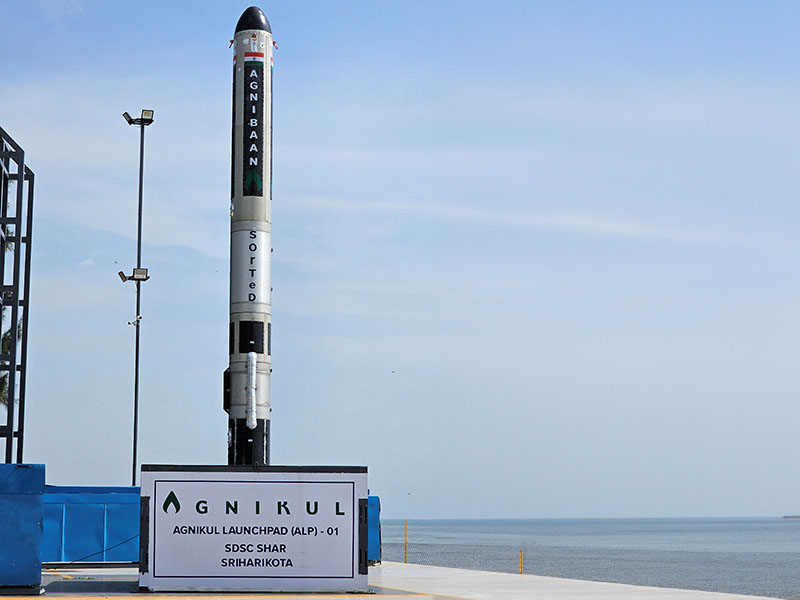To be sure, Skyroot Aerospace of Hyderabad launched its Vikram S rocket into sub-orbital flight in November 2022, making Agnikul’s rocket the second privately built rocket to be launched in India. Similar to Skyroot’s launch, Agnikul’s rocket accomplished a suborbital flight, ascending to a little over 8 kilometres in height.
Agnibaan SOrTeD (Sub-Orbital Technology Demonstrator) was the name of the rocket, in fact.With its launch, Agnikul, however, can claim at least three firsts: it was powered by the first 3D-printed rocket engine in history; it was India’s first semi-cryogenic rocket engine, operating on a kerosene-liquid oxygen (LOX) fuel-oxidizer mixture; and it was launched from the country’s first private space launch pad, Agnikul’s own ‘Dhanush’ pad, under observation from the company’s own mission control centre, albeit housed within ISRO’s space launch complex at Sriharikota.

Source: NDTV
These technological and commercial decisions are the hallmarks of the Agnibaan introduction. Utilising Additive Manufacturing, or 3D printing, to create rocket engines expedites the rocket assembly process and reduces the cost of space launches. Agnikul CEO Srinath Ravichandran claims that 3D printing a rocket engine can be completed in three days, compared to the three to four months it takes to make one normally.
Agnikul can thus provide clients with on-demand launch capabilities. Kerosene, also known as aviation turbine fuel, is the fuel and is readily available and manageable. Furthermore, Dhanush is a movable launch pad that offers launch location versatility. The technologies are on display. Agnikul’s current plan is to complete an orbital flight by the end of the fiscal year, after which it will launch commercial vehicles for paying clients in the following year.
Source: Wion
Two-stage rockets, the Agnibaan rockets, will be capable of launching satellites up to 100 kg into a 700 km high low-Earth orbit.The launch of Agnibaan also marks the accomplishment of the Narendra Modi government’s space policy and the viability of the approach it took in establishing the Indian National Space Promotion and Authorization Centre (In-SPACe) to foster the development of a private space industry in India that would rival that of the US, China, Europe, and Japan.
It is praiseworthy that Agnikul was nurtured at IIT-Madras and has received substantial backing from ISRO. Under the terms of the government’s space policy, ISRO can enter into agreements with the private sector to contribute its knowledge, experience, facilities, and technology. With Agnikul, Skyroot, and a number of other space start-ups, ISRO has successfully fulfilled this obligation. ISRO might gain from these start-ups’ inventiveness and willingness to take risks as well.Other federal institutions of science and technology could use it as a model.
What do you think about this? Comment below.

